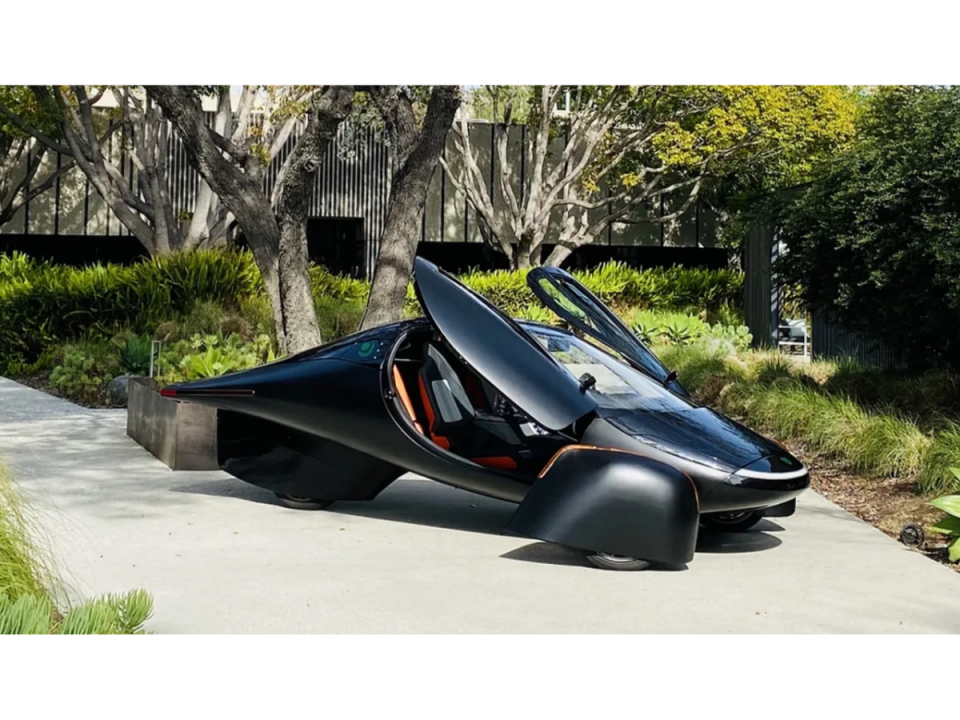Aptera Motors, based in San Diego, started taking orders for its three-wheeled solar car, the Aptera, about a year and a half ago. The Aptera looks like a cross between the Batmobile, the Delorian, and a personal-size airplane. The company sold out of several models of the car quickly, so many customers had to wait longer for their cars to arrive. But in a webinar last month, the company said that they had bought a factory to make more of their vehicles. This could be the start of a new era of emission-free transportation.
The factory in Carlsbad, California, has space for creating products that are 200,000 square feet. That’s a lot. To give you an idea, Tesla‘s main factory in Fremont, California, was 510,000 square feet (but has been expanded since its initial construction).
Aptera wants to make 10,000 cars by the end of this year and 600,000 cars a year by the end of the next. At the moment, the company says it has more than 25,000 orders, though some of them may not go through because all it takes to place an order is a $100 deposit. However, the company is betting that demand will go up because drivers of small cars, whether they run on gas or electricity, may decide to go solar.
Some people might be turned off by solar technology. It might be hard to get drivers who don’t live in sunny places to switch, even though it would save them money and be better for the environment to never have to pump gas or plugin. The three-wheeled, egg-shaped design may also be hard to sell, at least until more cars look like this.
On Aptera’s website, potential customers can use an interactive map to enter the “sun zone” where they live and the average number of miles they drive every day to get an idea of how often they’d need to plug the solar car into a charging source. The company thinks that people who drive less than 40 miles a day in the sunniest parts of the world could go 11,000 miles a year just on solar power. People who don’t live in places like Arizona, Egypt, Chile, Saudi Arabia, and so on would have to rely on the car’s battery storage much more.
The Aptera has a 100-kilowatt-hour battery pack and, like other electric cars, can be charged by plugging it in. Its solar roof panel system is called Never Charge, and you can add more panels to the hood and hatch to increase its range. The car’s egg-shaped but angularly streamlined body gives it a drag coefficient of 0.13. Drag coefficient measures how aerodynamic a car is, and the lower the number, the better. Tesla’s Model 3 has a drag coefficient of 0.23, and Volkswagen’s ID 4 electric SUV has a drag coefficient of 0.28.
The car can go from 0 to 60 miles per hour (mph) in 3.5 seconds and has a “safety cell” that is “seven times stronger than steel.” This is good news for people who worry that the car’s unique design might not be safe in an accident.
In late May, Aptera and RedViking, a manufacturing solutions company in Michigan that makes robots called “automated guided vehicles,” announced that they would be working together (AGVs). The AGVs are basically platforms on wheels that move heavy parts around the factory floor. They can send information about their position, movement, charging levels, and other diagnostic data. They can also see obstacles in their way and avoid collisions.
Aptera will use the robots to make it easier to put together vehicles by moving parts to where they need to be. The AGV system is also easy to change or add to over time. One of the most important things about Aptera’s cars is that the model with a range of 250 miles costs only $25,900. The model with a range of 1,000 miles costs $46,900, and extra customizations can bring the price up to $50,700.
Given how much gas costs now and how unstable the power grid is getting, a future where we drive around in cars powered by the sun sounds like a nice utopia. We don’t know if it will happen or how long it will take, but at least the (solar-powered) wheels are moving.
